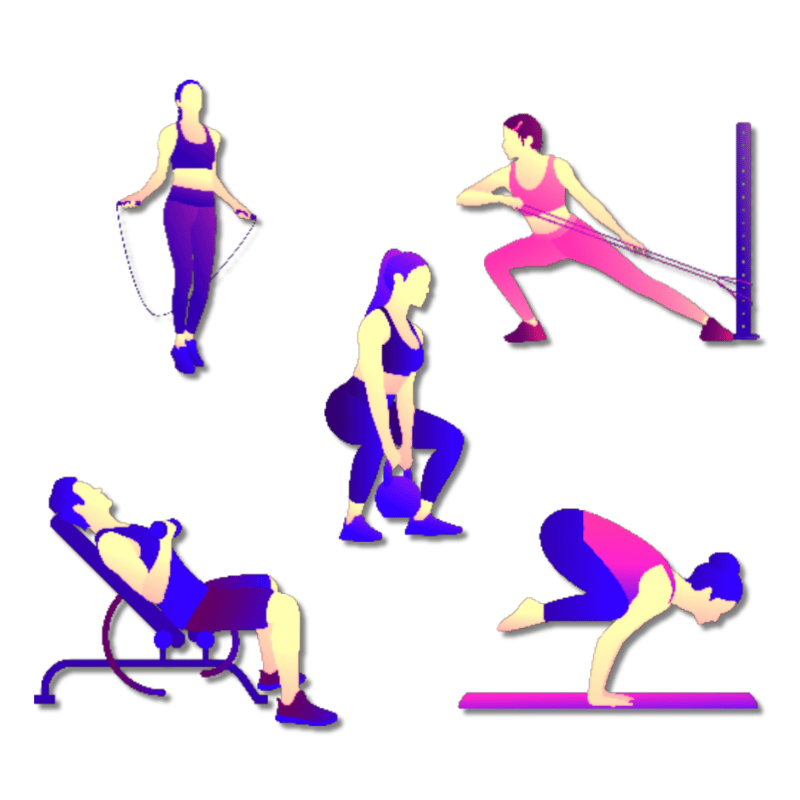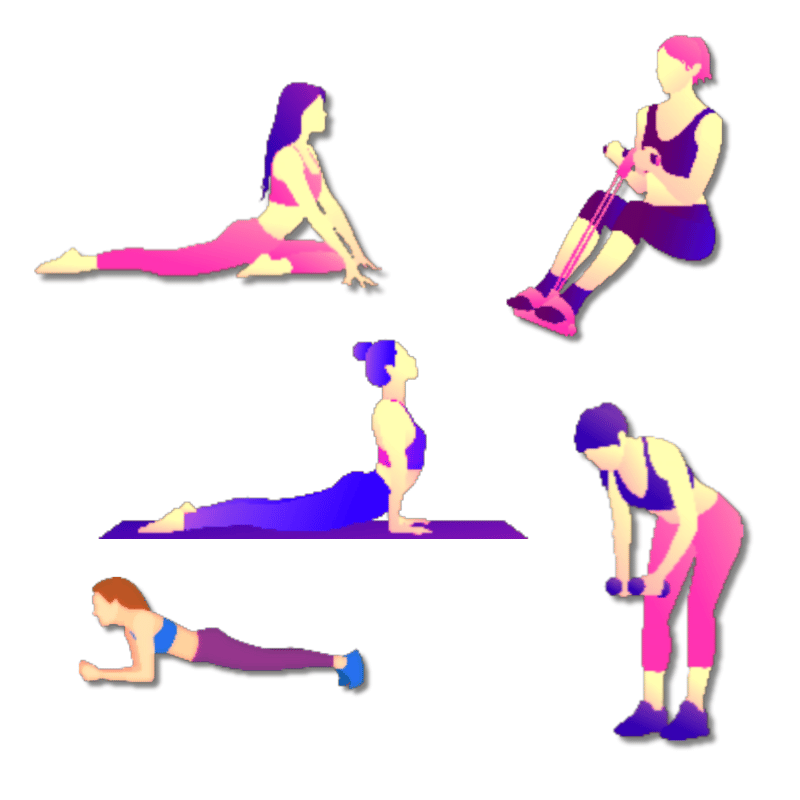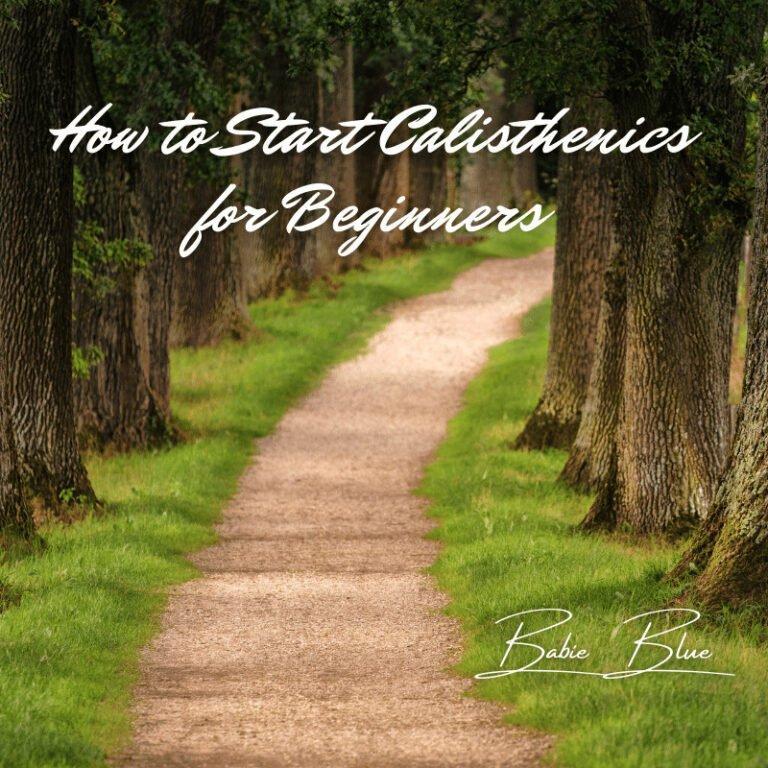Are you looking for an effective way to get into calisthenics and build a stronger, healthier body? This guide will show you how to start calisthenics, create a workout plan, and master beginner and hybrid calisthenics exercises. Learn everything you need to know to become a calisthenics pro!
Table of Contents
Introduction
Calisthenics is a form of exercise that involves using your own body weight to build strength, flexibility, and endurance. It's a popular choice for people who want to improve their fitness and overall health without needing to go to a gym or use weights. In this guide, we'll show you how to get started with calisthenics, create a workout plan, and master beginner and hybrid calisthenics exercises.
What is Calisthenics?
Calisthenics is a form of exercise that uses your own body weight as resistance. It includes exercises like push-ups, pull-ups, squats, lunges, and planks. Calisthenics can be done anywhere, at any time, without needing any special equipment. It's a great way to build strength, endurance, and flexibility, and it's perfect for people who want to get in shape without going to a gym or using weights.

How to Get into Calisthenics
Getting into calisthenics is easy! All you need is a space to workout and a willingness to learn. Start by setting a goal for yourself and then find some beginner calisthenics exercises to start with. You can use online resources like YouTube or fitness websites to find exercises that are right for you. Start with basic exercises like push-ups, squats, and lunges, and work your way up to more advanced exercises as you become stronger.
Beginner Calisthenics Workout Plan
A beginner calisthenics workout plan should include exercises that target all of your major muscle groups. This includes exercises for your chest, back, shoulders, arms, abs, and legs. Here's a sample beginner calisthenics workout plan:
Warm-up:
- Jogging in place for 5-10 minutes
- Jumping jacks for 1 minute
- High knees for 1 minute
- Butt kicks for 1 minute
Workout:
- Push-ups (3 sets of 10 reps)
- Squats (3 sets of 10 reps)
- Lunges (3 sets of 10 reps)
- Planks (3 sets of 30 seconds)
- Sit-ups (3 sets of 10 reps)
- Pull-ups (3 sets of 5 reps)
Cool-down:
- Stretching for 5-10 minutes
Hybrid Calisthenics:
Taking Your Workout to the Next Level Hybrid calisthenics combines traditional calisthenics exercises with other types of exercise, like weightlifting or yoga. This type of workout can be more challenging and can help you build even more strength and flexibility.

Some examples of hybrid calisthenics exercises include:
- Pistol squats
- Handstand push-ups
- Muscle-ups
- L-sits
- Planche push-ups
Tips for Mastering Calisthenics Exercises
To become a pro at calisthenics, here are some tips to keep in mind:
- Practice Consistently: Calisthenics requires regular practice to build strength, endurance, and flexibility. Set a workout schedule that you can commit to and stick with it.
- Focus on Form: Proper form is crucial in calisthenics exercises. Make sure you're doing each exercise correctly to avoid injury and get the most out of your workout.
- Progress Slowly: Don't rush to do advanced exercises. Start with the basics and work your way up gradually. This will help you build a strong foundation and avoid injury.
- Incorporate Variety: Keep your workouts interesting by incorporating different exercises and variations. This will challenge your muscles and prevent boredom.
- Listen to Your Body: Pay attention to how your body feels during and after each workout. If something doesn't feel right, take a break or adjust your form.

Common Mistakes to Avoid
As with any exercise, there are common mistakes that people make when starting calisthenics. Here are a few to watch out for:
- Skipping Warm-up and Cool-down: Warm-up and cool-down are important to prevent injury and muscle soreness. Don't skip them!
- Neglecting Proper Form: Improper form can lead to injury and make exercises less effective. Make sure you're doing each exercise correctly.
- Overtraining: Overtraining can lead to burnout, fatigue, and injury. Give your body time to rest and recover.
- Not Eating Enough: Calisthenics requires energy, so make sure you're eating enough to fuel your workouts.
- Comparing Yourself to Others: Everyone has different strengths and abilities. Focus on your own progress and don't compare yourself to others.
Calisthenics Equipment You Need
Calisthenics requires minimal equipment, but there are a few things you'll need to get started:
- Pull-up Bar: A pull-up bar is essential for exercises like pull-ups and chin-ups.
- Resistance Bands: Resistance bands can help you add resistance to your exercises and make them more challenging.
- Yoga Mat: A yoga mat can provide cushioning for exercises like sit-ups and planks.
- Dip Bars: Dip bars can be used for exercises like dips and leg raises.
How to Progress in Calisthenics:
Once you've mastered the basic calisthenics exercises, such as push-ups, pull-ups, and squats, it's important to progress to more advanced exercises in order to continue challenging your body and building strength. Here are some tips for progressing in calisthenics:
- Master the Basics: Before you can progress to more advanced exercises, it's important to make sure you have proper form and can perform the basic exercises with ease. Focus on mastering push-ups, pull-ups, dips, squats, and other basic calisthenics exercises before moving on to more advanced moves.
- Incorporate Progressions: Once you've mastered the basics, it's time to start incorporating progressions. For example, you can progress from regular push-ups to diamond push-ups to one-arm push-ups. Similarly, you can progress from regular pull-ups to chin-ups to muscle-ups.
- Use Resistance Bands: Resistance bands are a great tool for calisthenics progression. You can use them to assist with exercises like pull-ups and dips, or you can use them to add resistance to exercises like push-ups and squats.
- Increase Time Under Tension: Time under tension is the amount of time your muscles are under strain during an exercise. By increasing the time under tension, you can make an exercise more challenging without adding weight. For example, you can perform a slow and controlled push-up, taking three seconds to lower your body and three seconds to push back up.
- Incorporate Isometric Holds: Isometric holds involve holding a position for a certain amount of time without moving. Incorporating isometric holds into your calisthenics routine can help build strength and endurance. For example, you can hold the bottom of a squat for 30 seconds, or hold the top of a pull-up for 10 seconds.
Calisthenics for Weight Loss:
Calisthenics can be an effective way to lose weight, as it can help increase your heart rate, burn calories, and build muscle. Here are some tips for using calisthenics to support your weight loss goals:
- Focus on Compound Exercises: Compound exercises, which involve multiple muscle groups, are great for burning calories and building muscle. Examples of compound exercises include squats, lunges, push-ups, and pull-ups. By incorporating these exercises into your calisthenics routine, you can burn more calories and build more muscle.
- Increase Intensity: One of the best ways to burn calories during a calisthenics workout is to increase the intensity. This can be done by adding in more reps, increasing the speed of your exercises, or reducing rest time between sets. By increasing the intensity of your workout, you can burn more calories in less time.
- Combine with Cardio: While calisthenics can be a great form of cardio on its own, combining it with other forms of cardio can help you burn even more calories. For example, you can add in some jumping jacks, burpees, or running in place between calisthenics sets.
- Keep a Healthy Diet: While calisthenics can help you burn calories, it's important to also maintain a healthy diet in order to support your weight loss goals. Focus on eating whole foods, such as fruits, vegetables, lean protein, and whole grains, and avoid processed foods and sugary drinks.
- Track Your Progress: Keeping track of your progress can help you stay motivated and on track with your weight loss goals. Consider tracking your weight, measurements, and body fat percentage, as well as tracking your progress with calisthenics exercises.
Advanced Calisthenics:
Once you've mastered the basics of calisthenics, you may be ready to take your workouts to the next level with advanced calisthenics exercises. Here are some tips to help you get started:
- Master the Fundamentals: Before attempting advanced calisthenics exercises, it's important to have a strong foundation of the basic exercises. Make sure you can perform exercises like push-ups, pull-ups, squats, and lunges with proper form and control.
- Gradually Increase Difficulty: When working on advanced calisthenics exercises, it's important to progress gradually. Start with exercises that are slightly more challenging than what you're used to, and gradually increase difficulty over time. This will help prevent injury and allow you to build strength and skill.
- Incorporate Skill Work: Advanced calisthenics exercises often require a high level of skill and coordination. Incorporating skill work into your routine, such as handstands, L-sits, and planche progressions, can help you develop the necessary strength and control for more advanced exercises.
- Focus on Strength Training: To perform advanced calisthenics exercises, you'll need a high level of strength. Incorporate strength training exercises like weighted squats, deadlifts, and bench press to help build overall strength and muscle.
- Don't Forget Mobility and Flexibility: Advanced calisthenics exercises often require a high degree of mobility and flexibility. Make sure to incorporate stretching and mobility exercises into your routine to improve range of motion and prevent injury.
Calisthenics vs. Weightlifting:
While calisthenics and weightlifting are both great forms of exercise, they have their differences. This h2 section can compare and contrast the two, covering topics like muscle activation, equipment needed, and time commitment.
How to Stay Motivated in Calisthenics:
Like any exercise routine, it can be tough to stay motivated in calisthenics. This h2 section can cover tips for staying motivated, such as setting goals, finding a workout partner, and switching up your routine. It can also discuss the mental health benefits of calisthenics, such as reduced stress and increased confidence.
Conclusion
Calisthenics is a versatile and effective form of exercise that can help you build strength, endurance, and flexibility. By following the tips and workout plans in this guide, you can start your calisthenics journey and become a pro in no time! Remember to start slow, focus on form, and listen to your
FAQ's
Is calisthenics good for weight loss?
Yes, calisthenics can be an effective way to lose weight when combined with a healthy diet.
Can I do calisthenics every day?
It's best to give your body time to rest and recover, so aim to do calisthenics 3-4 times per week.
Can calisthenics build muscle?
Yes, calisthenics can help you build muscle and strength, especially when you progress to more advanced exercises.
Do I need to be in shape to start calisthenics?
No, anyone can start calisthenics regardless of their fitness level. Start with basic exercises and work your way up.
How long does it take to see results with calisthenics?
Results can vary depending on your starting fitness level and how consistent you are with your workouts. It's common to see results within a few weeks to a few months.

You must be logged in to post a comment.